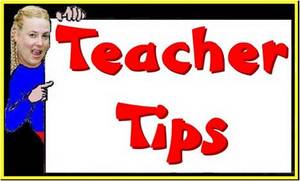ABSTRACT PAINTING AND ABSTRACT POEM
Abstract art is now generally understood to mean art that does not depict objects in the natural world, but instead uses color and form in a non-representational way.In the very early 20th century, the term was more often used to describe art, such as Cubist and Futurist art, that depicts real forms in a simplified or rather reduced way-keeping only an allusion of the original natural subject. Such paintings were often claimed to capture something of the depicted objects’ immutable intrinsic qualities rather than its external appearance.
The more precise terms, “non-figurative art,” “non-objective art,” and “non-representational art” avoid any possible ambiguity.
Just for example you can see any of the abstract paintings available in the net or any painting gallery in your area.
Just to get an idea about abstract poetry we can see the book; Ezra Pound: The Value of Incoherence; by M.L. Harvey, Ph.D..
While explaining Pound’s abstract poetry Harvey says:
;Consider, though, the contribution Ezra Pound made to the development of modern abstract poetry in English. An abstract poem requires loose ends. Loose ends are what keep the sometimes oppressive linearity of logical structure at bay. A loose end is a discontinuity–“. . .of this/A few words, an and yet, and yet, and yet” (Stevens). In our daily lives, which are filled with loose ends, we attempt to make sense of more than we can make sense of. Ultimately, we assume that everything makes sense or will make sense. We forget the dream images that fade into nonsensicality.
We overlook the non squirter in conversation. No matter that the current paradoxical discussions of quantum mechanics urge us to believe that light has knowledge or that someday free will and determinism will coexist simultaneously in the same syllogism–we proceed as best we can to make sense of everything using our own current tools for thinking to create clear, rational linearity. And before abstract art came into being, these habits of ours, more or less, reigned in the art world.
Looking back over the history of English poetry, let us say why not let symbol and metaphor run the whole show–if only to see what happens? For metaphor and symbol to run the whole show, you have to invent loose ends and not tie them up; you have to leave them where they are–as Ezra Pound did.;
What can be said about the work of Ezra Pound himself, apart from its contribution to the development of modern, abstract English poetry? Almost immediately, we discover a loose end. In spite of the fact that he is probably the first modern, iconoclastic, abstract English-language poet, Ezra Pound’s work celebrates the inestimable value of great, ancient art. His prose holds up the ancients for our admiration. The Cantos is stocked with allusions to and quotes from ancient and early modern cultures. Along with his love of great, ancient art, his works exhibit a disenchantment with the twentieth-century artist and scholar and with society at large. The ABC of Reading is full of examples. His disgust is evident in his poetry as well as his prose. The effect of his best passages is that their excellence as modern poetry ironically emphasizes the grandeur of the ancient. But this is only an historical accident. Do the ancient works seem better than our own? We know how good the old works are because two thousand years of readers testify to their greatness. The closer to the present we look, the less confident we are of our judgments until, for a certain type of mind, the present viewed in all its detail appears shabby indeed.
The explanation for Pound’s poetry also holds good for Thamizhanban.
How far it is suitable and how to comprehend the abstract poem of Thamizhanban.?
Let us see in the next post.




